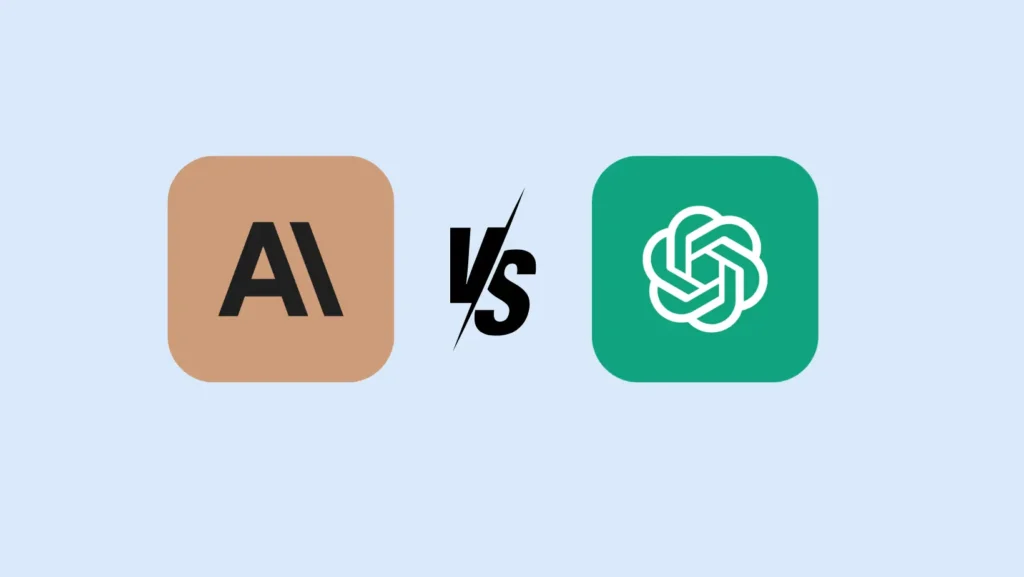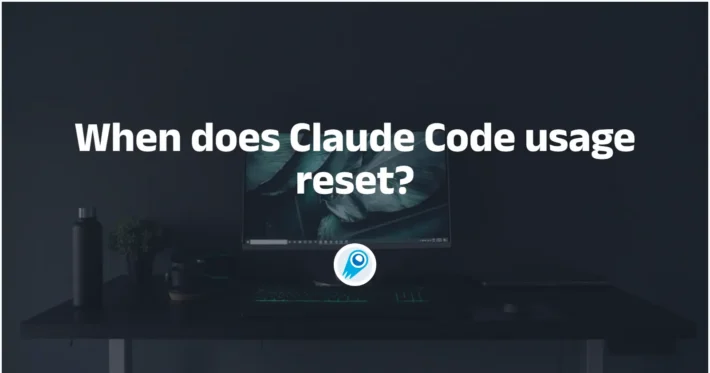Claude Code vs OpenAI Codex: Which is Better

Two of the leading contenders in Coding are Claude Code, developed by Anthropic, and OpenAI Codex, integrated into tools like GitHub Copilot. But which of these AI systems truly stands out for modern software development? This article delves into their architectures, performance, developer experience, cost considerations, and limitations—providing a comprehensive analysis rooted in the latest news and benchmarks.
What are Claude Code and OpenAI Codex?
Claude Code: A terminal-based agent for coding
Claude Code is Anthropic’s agentic command-line interface (CLI) designed to delegate substantial engineering tasks directly from the terminal. Built on the Claude 3.7 Sonnet model, it can:
- Search and read existing codebases.
- Edit and refactor files.
- Write and run tests.
- Manage Git workflows—committing, pushing, and merging.
Early testing indicates that Claude Code can handle tasks requiring 45+ minutes of manual effort, streamlining test-driven development, debugging, and large-scale refactoring. Native GitHub integration ensures real-time CLI output streaming, while “long-running command” support lets it tackle multi-stage projects autonomously.
OpenAI Codex: The backbone of AI code generation
OpenAI Codex is a specialized language model trained on vast public code repositories. As of May 2025, it powers GitHub Copilot and various API endpoints. Key features include:
- Translating natural-language prompts into executable code (e.g., building JavaScript games or generating data-science charts in Python).
- Interfacing with third-party services such as Mailchimp, Microsoft Word, Spotify, and Google Calendar.
- Embedding safety constraints to refuse malicious requests (e.g., malware, exploits) within a restricted container environment to minimize risks.
Codex‐1, for instance, demonstrates coreference resolution, enabling multi-step code synthesis, whereas Codex CLI (introduced in 2024) allows developers to leverage Codex directly from the terminal for customized workflows.
How do their core architectures and models compare?
What underlies Claude Code’s AI models?
At its foundation, Claude Code leverages Claude 3.7 Sonnet—a hybrid-reasoning model introduced by Anthropic. Since its unveiling, Anthropic has accelerated model updates, culminating in the March 2025 release of Claude Opus 4 and Claude Sonnet 4. These new Claude 4 variants boast:
- Hybrid reasoning for complex problem-solving versus faster tool use.
- Up to seven hours of autonomous operation (for Opus 4).
- 65% fewer shortcuts and enhanced context retention for long-term tasks.
- Features like “thinking summaries” for transparent reasoning insights and a beta “extended thinking” mode to optimize between reasoning depth and tool invocation.
Opus 4 and Sonnet 4 outperform competitor models—surpassing Google’s Gemini 2.5 Pro, OpenAI’s o3 reasoning, and GPT-4.1 on coding and tool-use benchmarks.
How is OpenAI Codex architected?
OpenAI Codex is built on the GPT architecture, fine-tuned on code-specific corpora. Key characteristics include:
- Parameter scale: Codex variants have up to 12 billion parameters (Codex 1).
- Safety layers: A restricted container environment reduces malicious code execution risk; coreference resolution improves multi-step prompt processing.
- Multi-modal interfaces: Although primarily text-based, Codex integrates with IDEs (e.g., VS Code) and supports third-party service APIs.
- Continuous improvements: As of mid-2025, OpenAI is iterating on Codex for better multi-file reasoning, though some limitations with step-by-step debugging remain .
How do their coding capabilities and performance differ?
What do benchmarks reveal?
On popular coding benchmarks, Claude models demonstrate a significant performance edge:
- HumanEval: Claude 3.5 Sonnet scored 92% versus GPT-4o’s 90.2%.
- SWE-bench (multi-file bug fixing): Claude 3.7 Sonnet achieved 70.3% accuracy, whereas OpenAI’s o1/o3-mini hovered around 49%.
These results underscore Claude 3.7’s superior reasoning in real-world debugging scenarios—fixing multi-file bugs and synthesizing complex solutions more accurately than Codex-based models.
How do they fare on real-world tasks?
Recent “BountyBench” cybersecurity experiments (May 2025) compared agents—including Claude Code, OpenAI Codex CLI, GPT-4.1, Gemini 2.5 Pro, and Claude 3.7 Sonnet. Findings:
- Defense (Patch) performance: OpenAI Codex CLI achieved a 90% patch success rate (equating to $14,422 in monetary value). Claude Code followed closely with 87.5% (mapping to $13,286).
- Offense (Exploit) performance: Claude Code led with a 57.5% exploit success (about $7,425), whereas Codex CLI reached only 32.5% (mapping to $4,200).
Thus, while Codex excels in patching and defensive tasks, Claude Code shows stronger offensive capabilities in vulnerability detection and exploitation—reflecting its extended reasoning capabilities in security contexts .
Additionally, at Anthropic’s “Code w/Claude” event (May 22, 2025), benchmarks demonstrated that Claude Opus 4 outperformed OpenAI’s ChatGPT o3 in both speed and quality on coding problems—narrowing the long-standing trade-off between detailed reasoning and response times.
What about developer experience and tooling integration?
How intuitive is Claude Code’s CLI environment?
Claude Code’s terminal-based design emphasizes minimal setup: after installing the CLI, developers can directly:
- Issue commands like
claude-code refactor --task "improve performance of data ingestion". - View real-time streaming outputs of test runs, commit diffs, and refactoring suggestions.
- Integrate smoothly with Git workflows—committing, pushing, branching—without leaving the terminal.
Developers report that Claude Code shines in collaborative debugging: it maintains an internal “scratchpad” that logs reasoning steps, enabling users to inspect intermediate decisions and refine prompts iteratively. Native GitHub integration further streamlines code reviews and pull-request generation .
How does Codex integrate with existing IDE workflows?
OpenAI Codex is most commonly accessed via GitHub Copilot—a plugin for Visual Studio Code, Visual Studio, Neovim, and JetBrains IDEs. Key integration features include:
- Inline code suggestions: Real-time autocompletion for functions, classes, and entire modules.
- Chat-based assistance: Explaining code snippets, translating between languages, and finding bugs using natural-language queries.
- Multi-model support: Users can choose between Anthropic’s Claude 3.5 Sonnet, Google’s Gemini 1.5 Pro, and OpenAI’s GPT-4o or o1-preview for Copilot suggestions.
Copilot’s latest free tier (launched December 2024) offers 2,000 monthly code completions and 50 chat messages—granting access to Claude 3.5 Sonnet or GPT-4o—making Codex-powered assistance more accessible to individual developers .
Both tools offer robust integrations, but Claude Code’s CLI-centric approach appeals to developers comfortable with terminal workflows and automation, whereas Codex via Copilot is ideal for those who prefer IDE-driven, interactive coding assistance.
How do pricing and cost considerations stack up?
What are Claude Code’s cost factors?
Claude Code charges per million input and output tokens—costs which can accumulate rapidly:
- Early users report daily expenses of $50–$100 for sustained usage—comparable to hiring a junior developer for an equivalent token throughput.
- The high API fees can be prohibitive for smaller teams or independent developers, making telegraphic code snippets feasible but large-scale refactoring expensive.
- Additionally, auto-update issues (e.g., altering file ownership on Ubuntu Server 24.02) have led to unplanned overheads for deployment maintenance. Anthropic has released workarounds, but these operational hiccups are an added burden.
However, enterprises leveraging Claude Sonnet 4 via Amazon Bedrock or Google Cloud Vertex AI benefit from volume discounts and longer context windows—mitigating token costs for large-scale applications.
How is Codex priced under Copilot?
OpenAI Codex itself is accessible through the Copilot subscription model:
- Copilot Free (VS Code only): 2,000 completions and 50 chat messages per month at no cost—ideal for hobbyists or occasional coding assistance.
- Copilot Pro (Individual): $10 per month ($100 annually) for unlimited completions, chat, and multi-file context support.
- Copilot Business: $19 per user per month with enterprise features (security, compliance).
- Copilot Enterprise: $39 per user per month on top of GitHub Enterprise Cloud licenses ($21 per user per month).
For API-only access to Codex CLI (bypassing Copilot), pricing matches OpenAI’s general token-based model, but Copilot’s bundled features (IDE integration, multi-model access) often deliver better cost-to-value for developers. Copilot’s free tier dramatically lowers the entry barrier, while enterprise plans offer predictable budgeting for large organizations.
What are their limitations and challenges?
Where does Claude Code fall short?
Despite its impressive reasoning:
- Complex engineering tasks: Claude Code excels at straightforward code generation and refactoring but can struggle with sprawling, multi-module architectures—requiring human oversight to ensure code quality and architectural coherence.
- Auto-update glitches: The CLI’s auto-update feature has, at times, altered file ownership on Linux servers, disrupting continuous integration pipelines until patched.
- High operational cost: As noted, daily token expenses rival developer salaries—challenging sustainability for long-term, heavy usage .
Moreover, because Claude Code is in limited research preview, some features (e.g., in-app rendering of diffs, custom plugin support) are still under development—hindering seamless adoption for production environments.
What pitfalls does OpenAI Codex face?
Codex, while powerful, comes with its own caveats:
- Multi-step prompt reliability: Codex can falter on multi-step or deeply nested tasks—occasionally generating inefficient or incorrect code that requires manual debugging.
- Security and bias concerns: Because Codex is trained on public repositories, it can inadvertently reproduce vulnerable code patterns or carry biases present in the training data. Research shows that ~40% of code generated by GitHub Copilot in high-risk scenarios contained exploitable design flaws .
- Code quality variance: Demonstrations reveal occasional one-off quirks—e.g., verbose or inefficient code snippets that require multiple prompt iterations to refine. Greg Brockman of OpenAI has acknowledged that Codex sometimes “doesn’t quite know exactly what you’re asking” .
Furthermore, while Copilot’s free tier is generous, hitting the usage cap (2,000 completions/month) forces users to upgrade—potentially stretching budgets for heavy collaborators or large coding sessions.
Which is better for different use cases?
Should individual developers choose Claude Code or Codex?
- Hobbyists and students will likely favor Codex via Copilot Free: zero upfront cost, seamless IDE integration, and access to multiple LLMs (e.g., Sonnet 3.5, GPT-4o) for up to 2,000 completions/month. This facilitates rapid experimentation and learning without budgeting concerns .
- Independent contractors or small teams may find Codex Pro ($10/mo) more cost-effective—offering unlimited suggestions, contextual understanding, and multi-file editing—whereas Claude Code’s token costs can escalate quickly on larger tasks.
However, power users who prefer terminal-based workflows, need deeper introspection into AI reasoning, and have budget flexibility might opt for Claude Code—especially when tackling complex refactoring or security-sensitive tasks where Claude’s deeper reasoning pays dividends .
What suits enterprise and large organizations?
- Claude Code (Opus 4/Sonnet 4 via Bedrock/Vertex AI) appeals to enterprises requiring robust hybrid reasoning, long-term context retention, and custom deployment within secure cloud environments. Volume licensing and enterprise SLAs help amortize token costs across large development teams.
- OpenAI Codex (Copilot Business/Enterprise) addresses large teams desiring seamless IDE integration, centralized billing, and built-in compliance features. Copilot’s support for multiple LLMs provides flexibility to choose Claude 3.5 or OpenAI’s GPT variants under a predictable subscription model.
For security-focused teams, Claude Code’s demonstrated edge in exploit detection (57.5% vs Codex’s 32.5% BountyBench exploit rate) may be crucial—especially in vulnerability assessment and automated patch generation workflows. Conversely, organizations prioritizing rapid adoption and cost predictability often lean toward Copilot’s subscription tiers, which bundle Codex capabilities with GitHub’s extensive ecosystem.
Conclusion
Claude Code and OpenAI Codex each bring distinct strengths to AI-assisted coding. Claude Code stands out for its hybrid-reasoning architecture, terminal-centric workflow, and superior performance on complex, multi-step tasks—albeit at a premium cost and with some operational caveats. OpenAI Codex, especially when accessed via GitHub Copilot, offers a more accessible, IDE-driven experience with predictable subscription pricing, making it ideal for individual developers and organizations seeking ease of integration.
Ultimately, the “better” choice hinges on specific priorities: if deep reasoning, security testing, and command-line automation are paramount—Claude Code may be worth the investment. If cost containment, rapid IDE integration, and collaborative coding are the focus—Codex via Copilot provides robust capabilities with minimal friction. As AI-driven coding continues to evolve, developers and organizations must weigh these trade-offs, often leveraging both tools in complementary roles to maximize productivity and code quality.
Getting Started
CometAPI is a unified API platform that aggregates over 500 AI models from leading providers—such as OpenAI’s GPT series, Google’s Gemini, Anthropic’s Claude, Midjourney, Suno, and more—into a single, developer-friendly interface. By offering consistent authentication, request formatting, and response handling, CometAPI dramatically simplifies the integration of AI capabilities into your applications. Whether you’re building chatbots, image generators, music composers, or data‐driven analytics pipelines, CometAPI lets you iterate faster, control costs, and remain vendor-agnostic—all while tapping into the latest breakthroughs across the AI ecosystem.
We’re excited to announce that CometAPI now fully supports the powerful Claude Code.What does this mean for you?
Top Artificial Intelligence features: Easily generate, debug and optimize code using models built specifically for developers.
- Flexible Model Selection: Our comprehensive range of models allows you to develop more seamlessly.
- Seamless Integration: APIs are always available. Integrate Claude Code directly into your existing workflow in minutes.
Ready to use Claude Code? To begin, explore the model’s capabilities in the Playground and consult the API guide for detailed instructions.
Developers can access latest Claude 4 API(Deadline for article publication): Claude Opus 4 API and Claude Sonnet 4 API through CometAPI. To begin, explore the model’s capabilities in the Playground and consult the API guide for detailed instructions. Before accessing, please make sure you have logged in to CometAPI and obtained the API key. CometAPI offer a price far lower than the official price to help you integrate.
See Also How to Install and Run Claude Code via CometAPI? The Ultimate Guide



